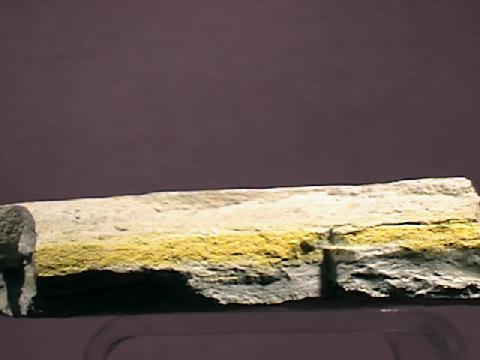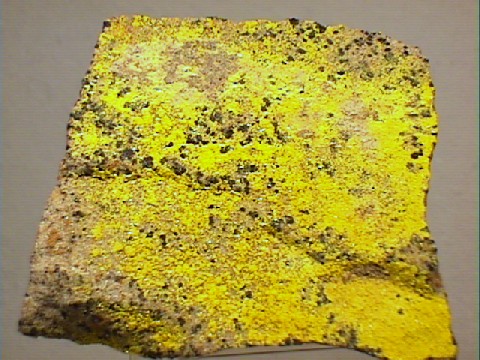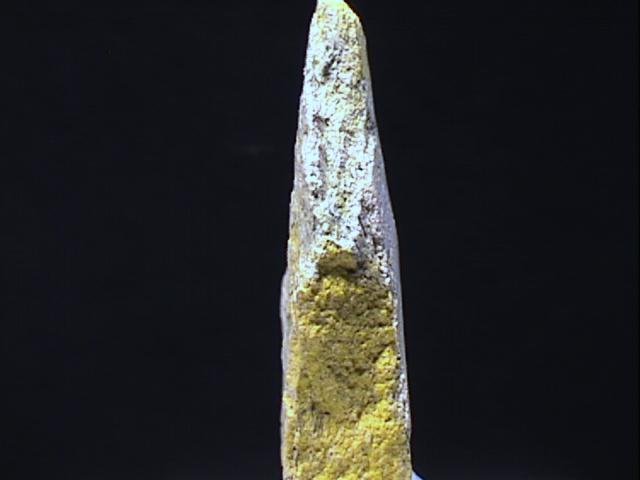 THE MINERAL CARNOTITE
THE MINERAL CARNOTITE
- Chemistry: K2(UO2)2(VO4)2- 1-3H2O , Hydrated Potassium Uranyl Vanadate.
- Class: Phosphates
- Group: Vanadium Oxysalt
- Uses: An important ore of uranium and vanadium and as mineral specimens.
- Specimens
Carnotite is a relatively uncommon mineral, yet common enough to be an important ore of uranium and vanadium.
Uranium and vanadium are two extremely strategic metals.
Carnotite is closely related to
tyuyamunite, Ca(UO
2)
2(VO
4)
2- 5-8H
2O.
The chemistries are very similar with potassium replacing calcium and a different percentage of water, however the structures are slightly different as tyuyamunite is orthorhombic and carnotite is monoclinic.
The two minerals are often found together and are essentially indistiguishable by ordinary methods.
Meteoric oxygenated waters dissolve the uranium from primary uranium minerals and the uranium is later deposited in reducing enviroments more favorable to the formation of carnotite.
Since many deposits in sandstones are associated with petrified trees and other fossils, it is reasonable to assume that the decaying material helped produce the required reducing enviroment.
Carnotite is an uncommon and interesting uranium mineral that can coat host rocks with an attractive yellow powder.
Remember, this is also a radioactive mineral and should be stored away from other minerals that are affected by radioactivity and human exposure should always be limited.
PHYSICAL CHARACTERISTICS:
- Color is bright yellow.
- Luster is pearly to dull or earthy.
- Transparency: Crystals are translucent to opaque.
- Crystal System is monoclinic; 2/m
- Crystal Habits include crusts, earthy masses, foliated and granular aggregates.
- Cleavage is perfect in one direction.
- Fracture is uneven.
- Hardness is 2.
- Specific Gravity is approximately 4 - 5 (heavy for translucent minerals), higher gravity with lower water content.
- Streak is yellow.
- Associated Minerals include other uranium and vanadium minerals in sandstones and limestones.
- Other Characteristics: Radioactive and not fluorescent.
- Notable Occurrences include many locations in Wyoming, Colorado, Arizona, Utah, Grants, New Mexico and Mauch Chunk, Carbon Co, Pennsylvania, USA; Shaba, Zaire; Morocco; Radium Hill, Australia and Kazakhstan.
- Best Field Indicators are bright yellow color, density, habit, lack of any fluorescence, radioactivity and associations.
 THE MINERAL CARNOTITE
THE MINERAL CARNOTITE
































